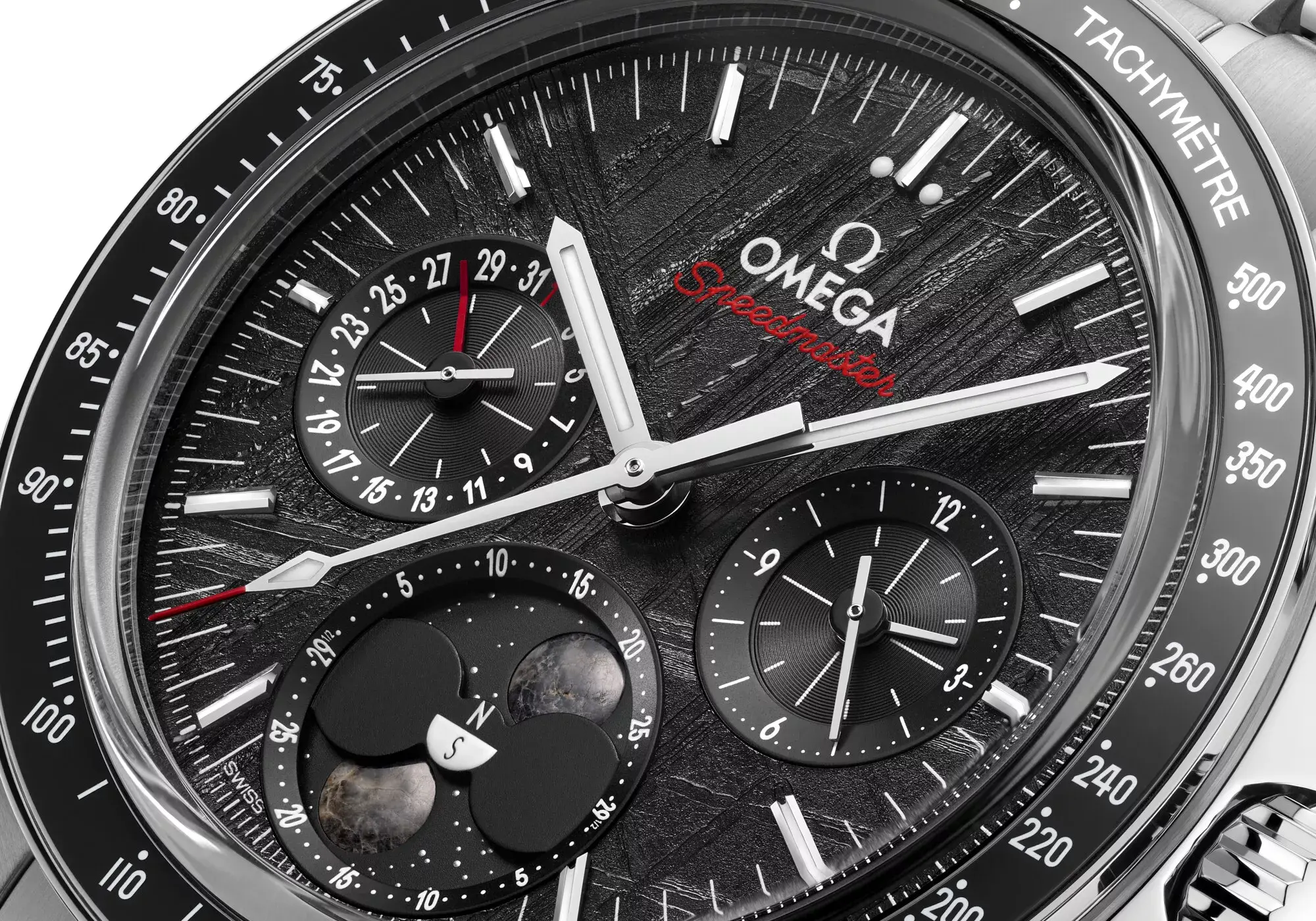Omega continues their annual January Speedmaster release this week with a somewhat surprising take on a moonphase complication set within a meteorite dial. While not a new complication to the family, this watch does represent a new configuration thanks to a new hand wound movement set within a new, trimmer case. The newest Speedmaster makes use of two different meteorite dials in grey and black, while the centerpiece at 6 o’clock (which looks a bit similar to a recent MoonSwatch release) showcases lunar meteorite cabochons displaying both the northern and southern hemispheres of the moon. There is a lot going on here, but Omega has managed to practice an element of restraint in bringing it all together in a watch that works surprisingly well.
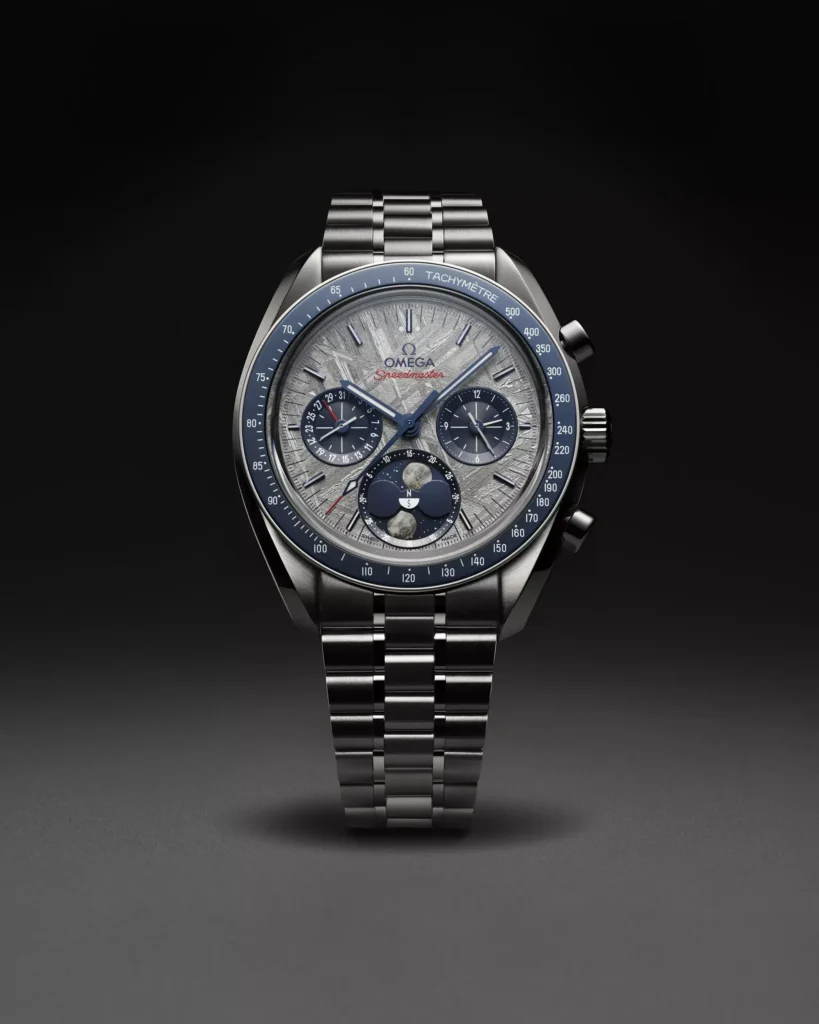
So, what’s new here? Well, basically everything. The Speedmaster has a well documented history with NASA’s Apollo program and their moon missions in particular, and this particular reference feels like a celebration of that fact in as many ways as possible. There are also some practical considerations going on here, such as the new steel case which measures 42mm in diameter, and a thinner 13.6mm thickness measurement. The new measurements come courtesy of the new hand wound caliber 9914 at work within. The movement is visible through the caseback, and is dominated by the three-quarter plate, revealing only the co-axial escapement. It’s not traditionally beautiful, but it’s unique to Omega and feels suitably business oriented.
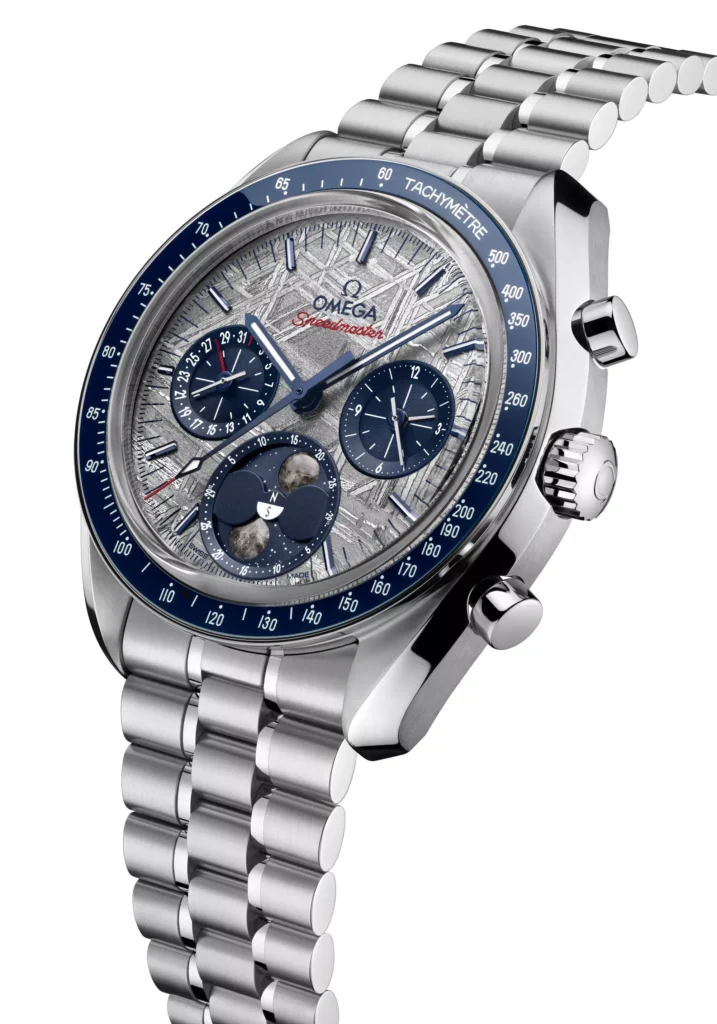
The dial layout is particularly interesting here, with no shortage of fun, small details to discover. Beginning at the three o’clock position, Omega has nested the hour and minute registers within a single dial, not a move unfamiliar to the brand. At the nine o’clock position we find the running seconds hand, framed by a date display at its perimeter. Finally, the star of the show here is the dual hemisphere moonphase display, with two lunar cabochons set against a starry night sky that recreates the placement of the stars exactly as they were on the night that Apollo 11 reached the Moon in 1969, as you would have seen in Bielle, home of the Omega manufacture.
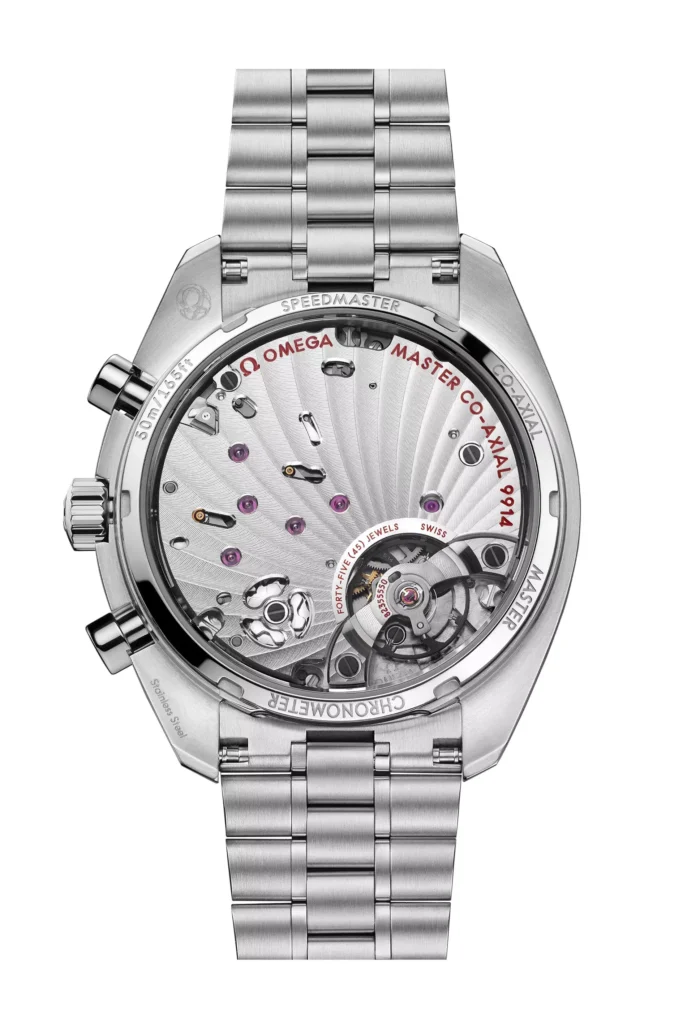
All of this is set within either a pure silver meteorite or PVD black meteorite dial. As such, each dial will have a unique pattern. Meteorite dials can be hit or miss, but there’s no arguing with the careful execution here by Omega, and further, the existence of this case and movement will likely have reverberating effects moving ahead.
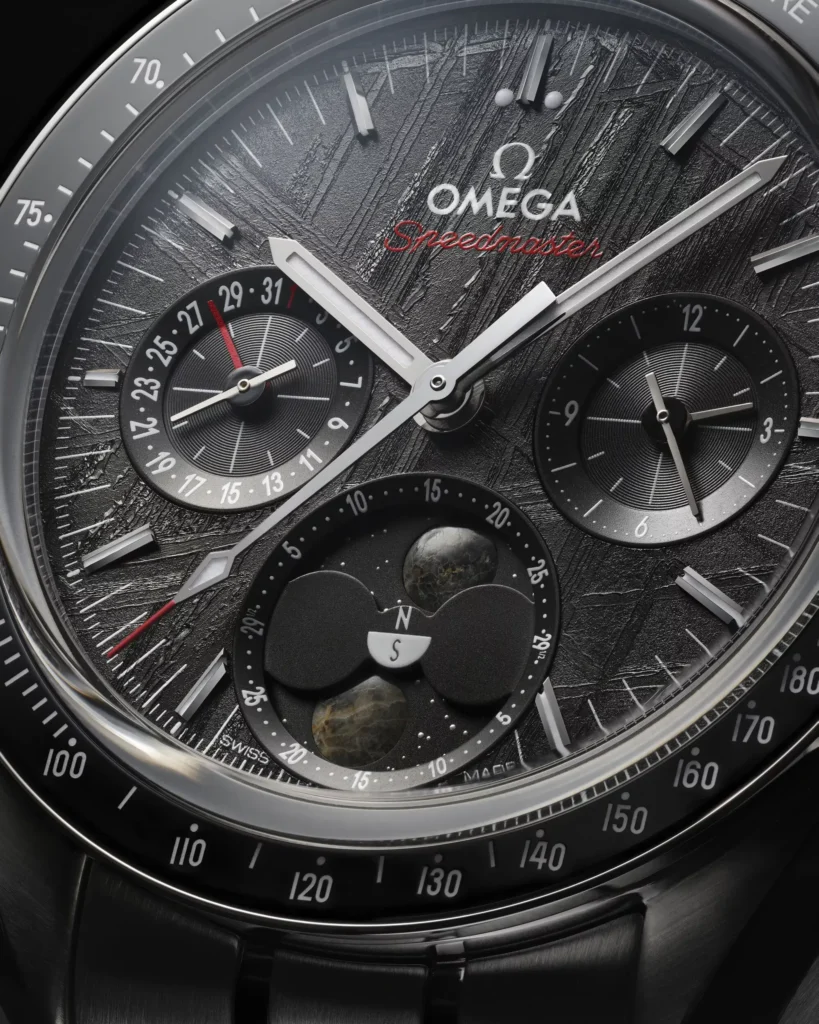
The price tag of $17,100 feels a bit aggressive, though this example gets a lot of bells and whistles that could be removed in future adaptations, such as a non-meteorite dial. Whatever the case, this latest Speedmaster pushes the lore a bit further in its own way, and shows a willingness to hone in on small ergonomic details. Omega

